| |
Sake's Hidden Stories
The Personalities, Philosophies, and Tricks-of-the-Trade Behind the Brew.
Go
beyond the basics of grades and production, and read stories about
actual brewers and what makes their sake what it is. This is what the
seminars and newsletters cannot teach you!
For a nice third-party review, see this cool blog.
Learn more and buy Sake's Hidden Stories HERE.
Another third-party cool blog review is here.
And yet a third cool blog review is here !
|
|
|
|
|
Greetings To All Readers
I dunno, maybe there is something scientific behind it but it always seems to me that at least here in Japan, when the seasons change, they change fast. Perhaps it is my imagination. But it sure felt that on September 1, the temperatures cooled down significantly, the summer birds up and left, to be replaced noticeably by the hordes of chirping locusts, crickets, and other countless crawling critters. (Maybe critters read the newspaper too, and were told fall was officially here.) Their contribution is that they make it truly feel like autumn.
And the tastings begin, as fall is the traditional release season for sake. Moreover, the industry begins to gear up for the long brewing season ahead. Most places will begin to scrub down the joint later this month, and kick in to the brewing itself in early October.
May you all enjoy the dwindling season upon you, as well as the one about to make its presence felt.
John |
|
Nama-zake, or unpasteurized sake, is something I come back to 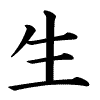 often in this newsletter series. There are a number for reasons for that, mostly surrounding its technical complexity and dubious nature in the flavor and aroma department. While there are many articles on this to be found in the archives of this newsletter, let’s sum it all up with a few lines. often in this newsletter series. There are a number for reasons for that, mostly surrounding its technical complexity and dubious nature in the flavor and aroma department. While there are many articles on this to be found in the archives of this newsletter, let’s sum it all up with a few lines.
Most sake is pasteurized twice, once after brewing and once again after maturation and before bottling. This stabilizes the flavors and aromas by killing off some bacteria, and deactivating enzymes that would feed them. Unpasteurized sake, nama-zake, should - dare I say must? - be kept refrigerated to keep it from getting weird on you. Remember too that there are degrees of this weirdness, some intolerable and others simply idiosyncratic or even quirkily appealing.
Next, note that sake matures entirely differently and at different speeds before and after pasteurization. And the method used too is of tantamount importance. Whether it is done once or twice, to what temperature it is heated, how long it stays there, how fast it is cooled down, and many other factors will hugely affect everything about a sake. Polarizing for simplicity, too powerful a pasteurization will give you great stability but strip the sake of character. Too light a process will leave it lively but unstable as well. Add to that the timing of all this - and the style of sake at which the brewer is aiming - and you’ve got yourself a complicated situation. Welcome to the art of sake brewing. But I digress.
Nama-zake can be appealing to many but not a few professionals find that the characteristic aromas et al of an unpasteurized sake obscure its depth and true nature. So while many try to market nama as better than pasteurized sake, it is not unequivocally so.
And, of course, none of this is cut and dried, black and white, here or there. Nama-zake can be great if properly handled and stored and not too mature.
So, with all that as a backdrop, let us consider some recent trends in the area of pasteurization. In short, more and more brewers are trying to get away with as little pasteurization as possible, or more correctly worded, tweaking the process more and more to maintain as much lively freshness, subtlety, and depth as they can yet inject enough stability for the market.
Naturally, many brewers don’t mess with this kind of thing as their sake styles would not benefit from it. But I seem to notice more and more brewers pasteurizing but once and using refrigeration more, or bending over backward to cool down the sake fast, or minimize the applied temperatures, and other house secrets here and there. Surely it is a good thing as they are pursuing both quality and appeal. But it has its inherent risks.
Consider the plight of a large and very reputable brewer from a very prestigious region. A few weeks ago they released a singly-pasteurized version of one of their products. It was released as a hiya-oroshi, which basically means it was pasteurized only one time and shipped a tad young. Normally this should be pretty stable, not absolutely needing refrigeration although likely better off with it, a bit young and lively as well.
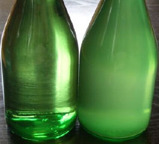 But something went amiss somewhere. More of the havoc-wreaking “hi-ochi kin” lactic bacteria were present than thought, or the temperatures used were not high enough, or something else. It is hard to know now, but after shipping thousands of bottles, a bunch of them here and there went way, way south. As such, the brewery was forced to recall the whole lot, even if most of them were fine. But something went amiss somewhere. More of the havoc-wreaking “hi-ochi kin” lactic bacteria were present than thought, or the temperatures used were not high enough, or something else. It is hard to know now, but after shipping thousands of bottles, a bunch of them here and there went way, way south. As such, the brewery was forced to recall the whole lot, even if most of them were fine.
That hurt. It hurt the brewery and it hurt the distributors and the retailers that had pre-sold the stuff too. The image of that brewery surely took a chink in the ole’ armor in the eyes of consumers too. (They’re solid, though, rock-solid; they will be fine for sure.)
In their pursuit of something special, in their drive for using cutting edge methods to create even more appealing sake, they pushed the envelope. And nature won that inning. She always does bat last.
More than the quandary of this one particular brewery, the main point here is to show how tricky nama can be, the complexity surrounding it, and how one seeming trend is to challenge and take some risk that can reap rewards - or backfire.
|
Did you know? Famous Toji...
A "toji" is a masterbrewer. With few exceptions (those being huge breweries), there is one toji at each brewery. He (or recently, sometimes a she) was traditionally in charge of everything: buying rice, paying the brewing staff, making the sake and (importantly!) paying the taxes. As they spent half of each year at the brewery, often the toji became like members of the kuramoto (brewery owner) family, often called "ojisan," or "uncle" by the kids. Rarely did - or do - toji leave breweries for other places. Loyalty and commitment have always been a big part of things. But it can happen from time to time. When a toji moves on, be it to another brewery or another world, if he has trained his brewers well, there will be no hiccup in quality. If not, however, the sake can change drastically, and with it the reputation of the brewery.
There are - and have been - famous toji as well. KInd of like rock stars (except for the fact that they are almost universally taciturn and very humble), their sake seems to gain momentum and mystique the longer they brew.
The industry just lost one such famout toji. 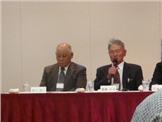 The toji at Doi Shuzo in Shizuoka since 1968, and known as one of the Four Guardians of Heaven of the
Noto Toji, (Noto Toji no Shiten-oh), Shokichi Hase passed away on July
17. He was the toji there for forty seasons - all at one kura. He helped make
Kaiun and Takatenjin what they are, and was surely one of the most
famous toji in the history of the craft. I am quite sure he took steps
to see that the brew maintained its quality after he was gone. May he
rest in peace, and may the Doi family and their sake not feel his
absence too much.
The toji at Doi Shuzo in Shizuoka since 1968, and known as one of the Four Guardians of Heaven of the
Noto Toji, (Noto Toji no Shiten-oh), Shokichi Hase passed away on July
17. He was the toji there for forty seasons - all at one kura. He helped make
Kaiun and Takatenjin what they are, and was surely one of the most
famous toji in the history of the craft. I am quite sure he took steps
to see that the brew maintained its quality after he was gone. May he
rest in peace, and may the Doi family and their sake not feel his
absence too much.
|
How would you like to go on a guided tour of a sakagura (sake brewery) with a 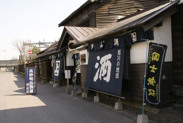 skilled interpreter that can guide you through the depths of the sake world? No need to worry about which doors to knock on, where to go, or how to leap the language chasm. You get here, and we take it from there. skilled interpreter that can guide you through the depths of the sake world? No need to worry about which doors to knock on, where to go, or how to leap the language chasm. You get here, and we take it from there.
And how would you like a seminar before the visit to better prepare you to absorb all that information (among other things...)?
Soon, you too will be able to tap into the depths of the sake world, and see how it is made at artisan breweries, smell the smells, taste the tastes and hear the hears.
These are taking shape, now, and we may have one to the Tottori-Shimane area, the Nada-Fushimi areas, and perhaps Nagano as well. The timing is likely to be February and March of 2010. I will send details when available, but those interested that have not yet done so can send an email to learnaboutsake@sake-world.com, and let us know. We will keep you posted as the brewing season and the program begin. |
NEW! NEW! NEW!Sake Professional Course in Las Vegas
November 2, 3 and 4, 2009
The 4th Stateside Sake Professional Course will be held in Las Vegas, Nevada on November 2, 3 and 4 (Monday through 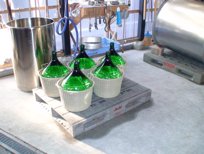 Wednesday) at the MGM Grand Hotel. All details have been hammered out, and can be read about here .The cost for the three day intensive program will be $775. Participation is limited and is about half full. (Or half empty... depending on your frame of reference.) The course is expected to fill up quickly with the local industry. Note, too, that the MGM Grand will be offering rooms to participants at a special rate. If you cannot make it to Japan, here is your chance to learn about sake, with "no sake stone left unturned." Wednesday) at the MGM Grand Hotel. All details have been hammered out, and can be read about here .The cost for the three day intensive program will be $775. Participation is limited and is about half full. (Or half empty... depending on your frame of reference.) The course is expected to fill up quickly with the local industry. Note, too, that the MGM Grand will be offering rooms to participants at a special rate. If you cannot make it to Japan, here is your chance to learn about sake, with "no sake stone left unturned."
The Sake Professional Course in Japan
January 25 to 29, 2009
The 2010 Sake Professional Course will take place in Tokyo (and Osaka, Kyoto and Kobe) Japan from Monday January 25 to Friday January 29, 2010.This is it, folks: simply the most thorough sake education on the planet. Three days of instruction and tasting are augmented by two days of sake brewery visits, with evenings filled with good food and the best sake Japan has to offer. Reservations are being taken now, and are expected to go fast. For more information please go here, and/or to reserve, please email me at sakeguy@gol.com.
|
Further Reading
Dancyu Blog
I have begun a blog on sake related ramblings for the gourmet magazine Dancyu. It is, however, in Japanese. Should you be interested and able to check it out, you can find it here.
Further Listening
I have also begun an audio program - five minutes at a time - that includes sake recommendations. The monthly posts can be heard at www.japanlivingarts.com a fascinating blog covering a wide range of arts and traditions of Japan, done by Steve Beimel, a decades-long resident of Kyoto. It is worth visiting for much more than the few measly sake updates!
Sake Bar "Nihonshu" in Melbourne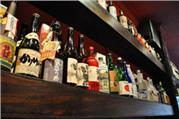
A new sake pub has opened in Melbourne, Australia. Owned by Sake Professional Course I and II graduate Andre Bishop, more info is available here for those readers close enough to check it out. While I have not had that pleasure yet, I hope to soon. |

Are you not getting this newsletter? I realize that is likeasking that "those not present please raise your hand," but for future reference, should you spontaneously stop receiving this newsletter, please go here and sign up again. Should that not work, please go to www.sake-world.com.
Email newsletter services are very careful not to be considered spam enablers, but the problem is that often very valid email addresses come back bounced as invalid. It is an unavoidable problem. So if you or someone you know is not getting this, or stop(s) receiving it inexplicably, please do take a moment to double check that you are still subscribed.
Sincere apologies for the hassle, mixed with gratitude for reading this newsletter.
|
Sake's Hidden Stories
I am very pleased, if not relieved, to finally announce the publication of my new ebook, Sake's Hidden Stories, subtitled The Personalities, Philosophies, and Tricks-of-the-Trade Behind the Brew.
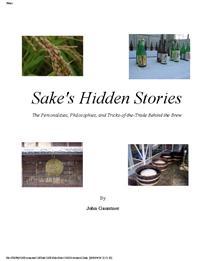 Sake's Hidden Stories ($14.99) will give you a view to what goes on in the sake industry behind the brew we all love so much. The book goes into stories much deeper than the information we most commonly encounter; way beyond simply what ginjo-shu is, what junmai-shu is, or what the role of koji is. You will learn about the personalities behind the sake. You will see in just how much detail some brewers make sake, and how each is different in where importance is placed. And most significantly, something that has not been written about in any book on sake in English, you will meet more than a dozen brewers, and encounter their personalities. You'll see what makes them tick, what drives them in their work, and how their histories and idiosyncrasies affect the sake they brew.
Sake's Hidden Stories ($14.99) will give you a view to what goes on in the sake industry behind the brew we all love so much. The book goes into stories much deeper than the information we most commonly encounter; way beyond simply what ginjo-shu is, what junmai-shu is, or what the role of koji is. You will learn about the personalities behind the sake. You will see in just how much detail some brewers make sake, and how each is different in where importance is placed. And most significantly, something that has not been written about in any book on sake in English, you will meet more than a dozen brewers, and encounter their personalities. You'll see what makes them tick, what drives them in their work, and how their histories and idiosyncrasies affect the sake they brew.
For more information on content and get your copy, go here.As with any ebook or informational product I offer, satisfaction is 100% guaranteed. If you don't like it or feel it was worth what you paid for it, I will cheerfully refund your money.
Finally, for a nice third-party review of the book, check out this cool blog.
Sake Educational Products
Jump-start your sake savvy
ust a reminder to check out the Sake-World e-store,currently offering 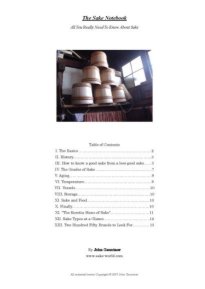 three educational products immediately downloadable for your education and further sake enjoyment. See Educational Products at Sake-world.com.
Currently, we have three products, with more to come soon, including a
full-blown, comprehensive self-study course covering all the material
in the Sake Professional Course, and more. three educational products immediately downloadable for your education and further sake enjoyment. See Educational Products at Sake-world.com.
Currently, we have three products, with more to come soon, including a
full-blown, comprehensive self-study course covering all the material
in the Sake Professional Course, and more.
First is The Sake
Notebook, a 15-page pdf file guaranteed to jump-start your sake
understanding and appreciation. It covers everything related to sake in
a tight, concise and easily digestible presentation replete with plenty
of photos and diagrams for at-a-glance enlightenment. Sake basics,
history, grades and quality levels, aging, temperature, storage and
more are all briefly touched upon to create a foundation upon which
more sake learning can flourish. There is also a list of 250 (count
'em!) sake brands to look for and try. Finally, included with purchase
is access to a password protected area on www.sake-world.com known as
"The Goodstuff" a regularly updated list of good sake recommendations,
replete with brief commentary on each, and some indication of John's
personal recommendations and preferences. Available for $15.
Next
is The Sake Production Slideshow, an executable file (Photojam) wherein
resides a 15-minute slideshow of photos of the sake-brewing process
from beginning to end, giving you a glimpse into the day-to-day brewing
environment of sakagura in Japan. Available for $15. Also, access to
"The Goodstuff" comes with this product as well.
Third is a
bundled package of both The Sake Notebook and The Sake Production
Slideshow for those that cannot make up their minds or simply have to
have - or give - both as gifts. Available as a set for $25.
Surely
these would make wonderful gifts for those close to you that are
itching to get into good sake, and their easily downloadable digital
format makes it all that much easier. |
Odds-n-Ends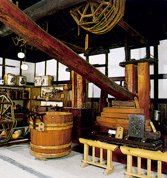 Links to Sake Book Info and Archives
Links to Sake Book Info and Archives
Past Issues Posted
The archives of this newsletter are again up-to-date. If you have missed any, feel free to check them out on the Sake-World site.
More information on the following topics can be found at
www.sake-world.com/html/nl_related.html
Sake Homebrewing
Books on Sake
Information on the archives of this newsletter
General information related to this publication |
I hope you have found the above information helpful
and 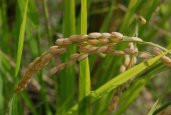 entertaining. For more information about all things sake, please
check out www.sake-world.com. Until next month, warm regards, and enjoy
your sake. entertaining. For more information about all things sake, please
check out www.sake-world.com. Until next month, warm regards, and enjoy
your sake.
Questions and comments should be directed to John Gauntner, at the email address above.
All material Copyright, John Gauntner & Sake World Inc.
Regards,
John Gauntner
Sake World, Inc. |
|
